- Home
- >
- Preservation Archaeology Blog
- >
- A Dream Comes True
When I was a kid growing up in the Denver area, I loved going to the Denver Museum of Nature and Science (DMNS). There, I could see fantastic nature dioramas, rooms full of dinosaur skeletons, and Egyptian mummies. Now that I’m back in Colorado, my son and I frequent the museum’s paleontology and space exhibits. If you’ve spent any time in the Denver area, you’ve probably been to the DMNS, too—it’s a significant destination.
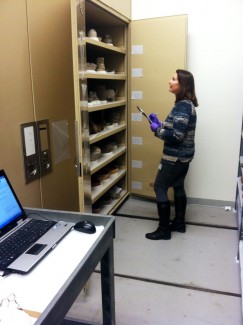
What most visitors don’t know—and even I didn’t, until fairly recently—is that the DMNS also curates a large collection of precontact Southwestern pottery (archaeological ceramics dating before the arrival of Europeans). I learned about this collection when Curator of Archaeology Steve Nash asked me, as a ceramics expert, to review and correct ware and type identifications of some of the whole vessels. Of course, I said “Yes!”
(To facilitate comparisons, archaeologists use certain terms to classify Southwestern pottery. “Wares” represent technological traditions—how a pot was made, and with what materials—that are associated with groups of people in different places. A “type” is a subdivision that indicates a particular style or design configuration. These usually reflect change through time.)
Like many museum collections, the DMNS Southwestern pottery collection has grown through numerous donations by private collectors over many decades. Thus, the accuracy and completeness of information associated with many of the items is sometimes, errrrr, less than ideal. Dr. Nash would like to have this information verified and updated so that the collection can become more useful for research and education. Knowing the potential of legacy collections such as this, I’m really pleased to help with the project.
For a few hours each week, longtime DMNS Anthropology volunteer Larry Harvey and I work in the collections storage area. (Oh, if my girlhood self could see me now, working behind the scenes in such a place!) The collection of about 800 whole vessels is housed in enormous steel cabinets, some of which require a tall ladder to access—and extreme caution when removing vessels. Larry and I examine each vessel, checking it against our master inventory, and then we record baseline information—vessel ware, type, culture of origin, and manufacturing dates—into an Excel spreadsheet that we have created. Eventually, this information will be added to the collections database, as well as to the DMNS image archives. Images of some of the whole vessels may be found here.
Here are some examples of interesting vessels I’ve encountered so far:
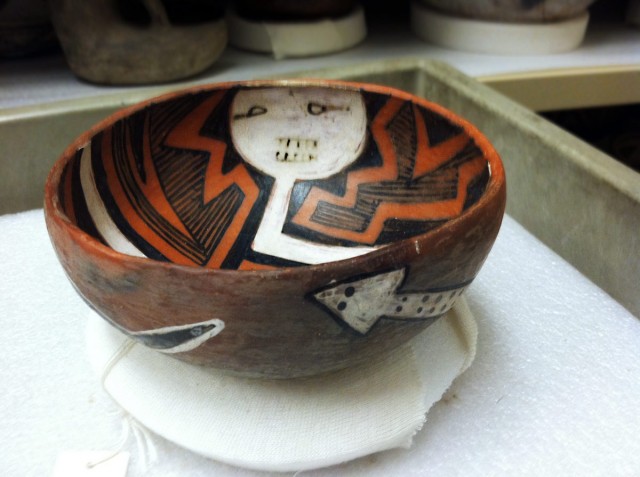
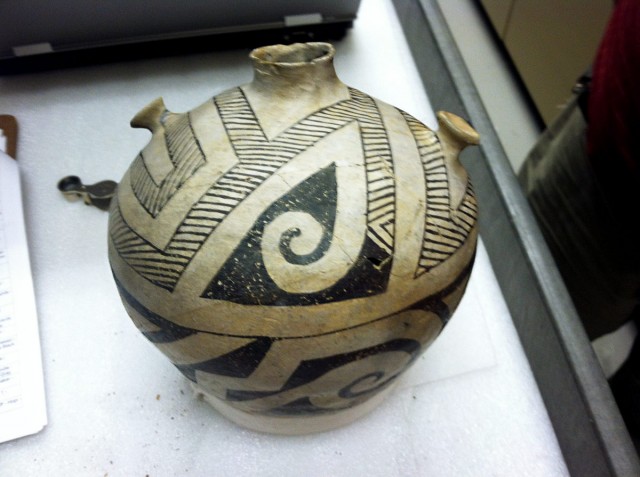
One thought on “A Dream Comes True”
Comments are closed.
Explore the News
-
Join Today
Keep up with the latest discoveries in southwestern archaeology. Join today, and receive Archaeology Southwest Magazine, among other member benefits.
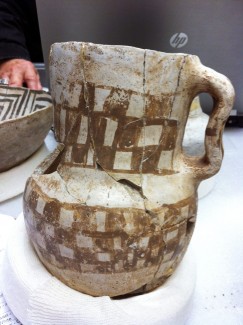
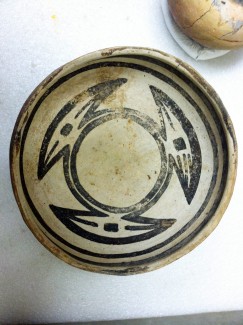
This is an unusual request. I’m a 1979 grad of UNM and, very briefly, a project I undertook in Geography concerning the Mogollon of New Mexico was centered around the Hinkle Cliff Dwellings. At that time, in the archives of the UNM library, I was only able to find notes from the original excavation, I believe in 1912. In 1978, my husband and I, using whatever notes/rough maps available and up to date contour/geological maps, tried to find the dwellings. I was wondering if anyone has info on what other excavations had been done since 1978. I did notice photos of Dr. Nash’s work at Hinkle Cliffs. Was this just the 2nd excavation done? I find little info on the site via web so I’m assuming it is not publicly known. I was extremely disappointed when we couldn’t find it and was hoping to find out if there are notes/maps that I could see to find it. I live in Atlanta, I am 56 and can’t rough it like I used to. I may not get back to NM anytime soon, but am so curious to see what the current findings were with the much newer technology than 1912 offered. I can’t remember, but was the name “Hinkle” the name of the archaeologist/anthropologist who discovered it?
Thank you! Debbie Iturrizaga